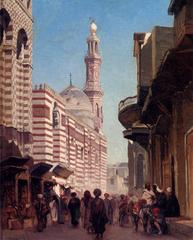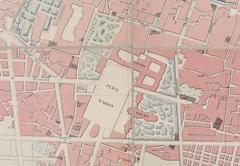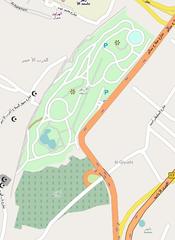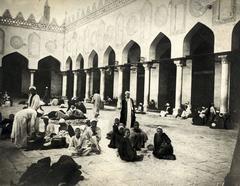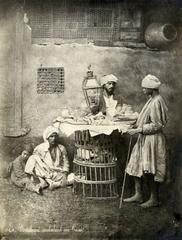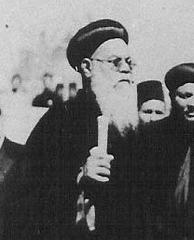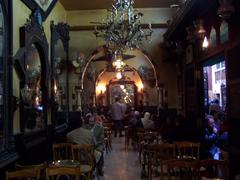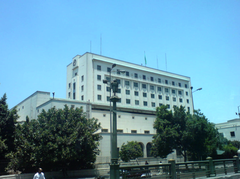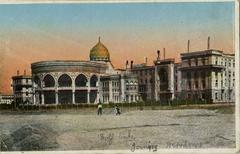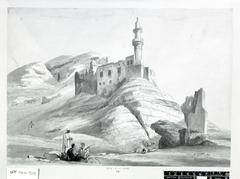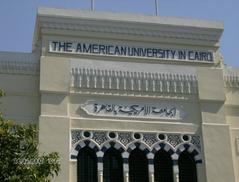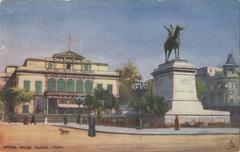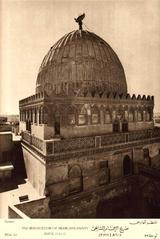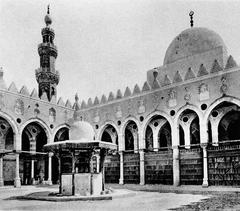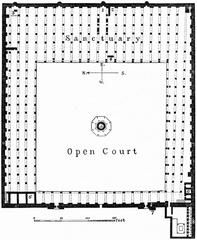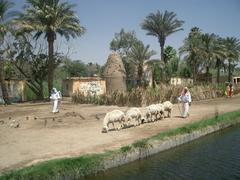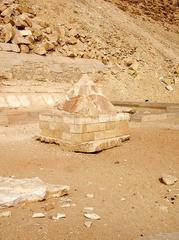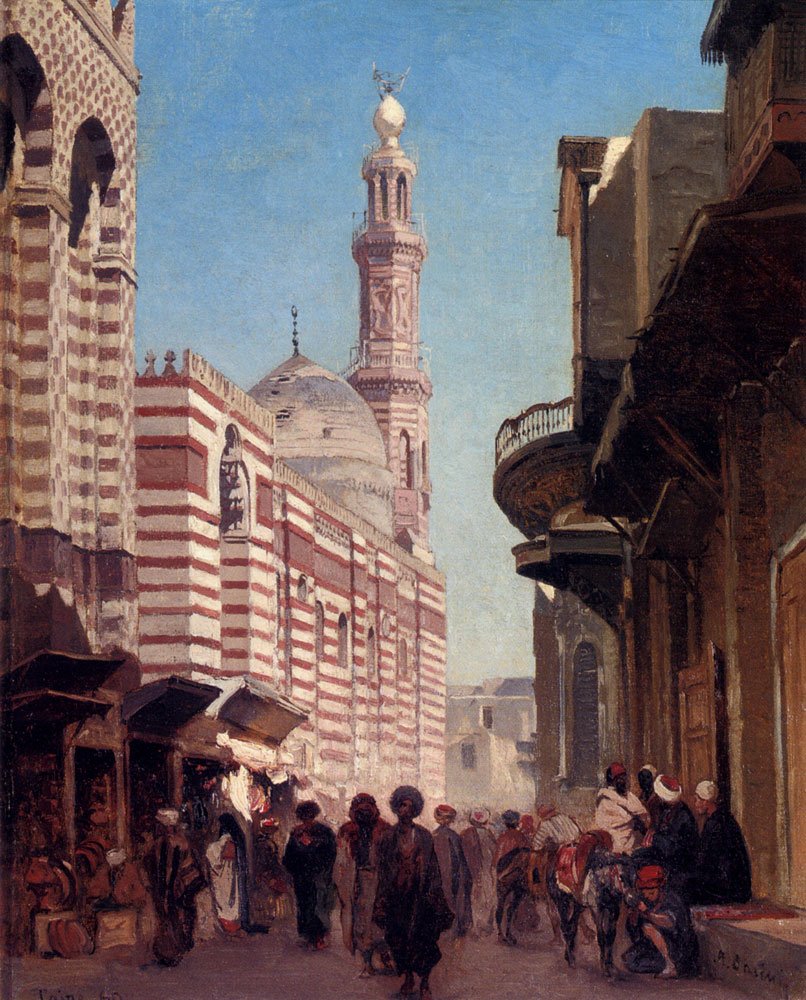
Exploring Al-Muizz Street in Cairo, Egypt
Date: 18/07/2024
Introduction
Muizz Street, officially known as Al-Mu’izz li-Din Allah al-Fatimi Street, is a historic thoroughfare in Cairo, Egypt, and a living testament to over a thousand years of Egyptian history and culture. Named after the fourth Fatimid caliph, Al-Mu’izz li-Din Allah, who relocated the Fatimid Caliphate’s capital from Tunisia to Cairo in 973 CE, the street epitomizes the city’s rich historical tapestry. It stands as a symbol of Cairo’s evolution through various dynasties and eras, particularly flourishing during the Fatimid period, a golden age marked by economic and cultural prosperity. During this time, Muizz Street emerged as a bustling hub of commerce, scholarship, and religious life, adorned with grand palaces, mosques, and markets reflecting the dynasty’s wealth and sophistication (Archnet).
Today, Muizz Street is celebrated for its remarkably preserved Islamic architecture, offering visitors a captivating journey through time. Key landmarks include the Mosque of Al-Hakim bi-Amr Allah, completed in 1013 CE, and the Qalawun Complex, a masterpiece of Mamluk architecture from the 13th to 16th centuries (World Monuments Fund). The street is not just a collection of historical monuments; it is a vibrant tapestry of Egyptian culture, teeming with life as locals navigate its narrow alleyways, vendors hawk their wares, and traditional workshops continue age-old crafts. Adjacent to Muizz Street is the Khan el-Khalili Bazaar, a bustling market that has been a center of trade for centuries (Egypt Online). This dynamic blend of history and modernity makes Muizz Street one of Cairo’s most significant historical sites and a must-visit destination for anyone interested in exploring the rich heritage of Egypt.
Table of Contents
- Introduction
- Historical and Cultural Context
- Architectural Marvels - A Walk Through Time
- Beyond the Monuments - A Living Heritage
- Visitor Information
- Nearby Attractions
- Cultural Significance - A Symbol of Cairo’s Heritage
- Experiencing Muizz Street - A Sensory Journey
- Frequently Asked Questions (FAQ)
- Conclusion
Exploring Muizz Street - Cairo’s Historic and Cultural Gem
Introduction
Muizz Street, located in the heart of Cairo, is a living museum of Egyptian history and culture. This article will take you on a journey through the street’s rich past, its architectural marvels, and the vibrant life that thrives there today. Discover why Muizz Street is considered one of Cairo’s most significant historical sites and what visitors can expect during their visit.
Historical and Cultural Context
A Thousand Years of History
Al-Mu’izz li-Din Allah al-Fatimi Street, more commonly known as Muizz Street, stands as a testament to over a millennium of Egyptian history. Named after the fourth Fatimid caliph, Al-Mu’izz li-Din Allah, who moved the Fatimid Caliphate’s capital from Tunisia to Cairo in 973 CE, the street embodies the city’s evolution through various dynasties and eras.
The Fatimid Era - A Golden Age
The Fatimids, a Shia Ismaili dynasty, ushered in a period of economic and cultural prosperity in Egypt. Muizz Street, established as the central spine of their newly founded city, al-Qahira (Cairo), became a bustling hub of commerce, scholarship, and religious life. Grand palaces, mosques, and markets lined the street, reflecting the dynasty’s wealth and sophistication.
Architectural Marvels - A Walk Through Time
Today, Muizz Street offers a captivating journey through time with its remarkably preserved Islamic architecture. Visitors can marvel at:
- Mosque of Al-Hakim bi-Amr Allah - Completed in 1013 CE, this mosque showcases the early Fatimid architectural style with its massive minarets and imposing facade (Archnet).
- Qalawun Complex - A masterpiece of Mamluk architecture (13th-16th century), the complex houses a mosque, a madrasa (religious school), and a mausoleum, showcasing intricate stonework and geometric designs (World Monuments Fund).
- Madrasa of Sultan Barquq - Built in the late 14th century, this madrasa exemplifies the Mamluk period’s architectural grandeur with its soaring arches, colorful mosaics, and impressive courtyard (Qantara).
Beyond the Monuments - A Living Heritage
Muizz Street is not merely a collection of historical monuments; it’s a vibrant tapestry of Egyptian culture. The street pulsates with life as locals navigate its narrow alleyways, vendors hawk their wares, and traditional workshops continue age-old crafts.
- Khan el-Khalili Bazaar - Adjacent to Muizz Street, this bustling market has been a center of trade for centuries. Visitors can find everything from spices and perfumes to handcrafted jewelry and souvenirs (Egypt Online).
- Traditional Craftsmanship - Muizz Street is home to numerous workshops specializing in traditional Egyptian crafts. Visitors can witness artisans crafting copperware, glassware, leather goods, and traditional clothing.
- Local Cuisine - The street offers a chance to savor authentic Egyptian cuisine. From street food vendors selling koshari (a hearty mix of rice, lentils, and pasta) to traditional restaurants serving flavorful tagines and grilled meats, there’s something to satisfy every palate.
Visitor Information
Knowing practical details can enhance your visit to Muizz Street. Here are some key points:
- Visiting Hours - Muizz Street is open to visitors every day, but the best time to visit is during daylight hours to fully appreciate the architecture.
- Tickets - Entry to Muizz Street itself is free, but some historical sites along the street may charge a small entrance fee.
- Accessibility - The street is pedestrian-friendly, but some areas may have uneven surfaces, so comfortable walking shoes are recommended.
Nearby Attractions
While visiting Muizz Street, consider exploring these nearby attractions:
- Al-Azhar Park - A beautiful green space offering stunning views of Cairo and a serene escape from the bustling city streets.
- The Egyptian Museum - Home to an extensive collection of ancient Egyptian artifacts, including the treasures of Tutankhamun.
- The Citadel of Saladin - A historic Islamic fortification with panoramic views of Cairo.
Cultural Significance - A Symbol of Cairo’s Heritage
Muizz Street holds immense cultural significance for Egyptians. It represents a tangible link to their rich history and serves as a reminder of the country’s artistic and architectural prowess. The street’s preservation efforts highlight the importance of safeguarding cultural heritage for future generations.
Experiencing Muizz Street - A Sensory Journey
A visit to Muizz Street is a sensory journey through time and culture. The sights of magnificent architecture, the sounds of bustling crowds and traditional music, the smells of spices and street food, and the opportunity to interact with locals create an unforgettable experience.
To truly appreciate the street’s historical and cultural depth, consider:
- Guided Tours - Joining a guided tour can provide valuable insights into the history and significance of the various monuments and landmarks.
- Respectful Attire - As Muizz Street is home to numerous religious sites, visitors should dress modestly, covering their shoulders and knees.
- Haggling Etiquette - Bargaining is customary in the Khan el-Khalili Bazaar. Engage in friendly negotiations to secure the best prices for souvenirs.
- Photography - While photography is generally permitted, it’s important to be respectful of locals and avoid taking photos of people without their consent.
Frequently Asked Questions (FAQ)
Q: What are the visiting hours for Muizz Street? A: Muizz Street is open every day, with the best time to visit being during daylight hours.
Q: Is there an entrance fee for Muizz Street? A: Entry to Muizz Street is free, but some historical sites along the street may charge a small entrance fee.
Q: Are there guided tours available? A: Yes, guided tours are available and can provide valuable insights into the history and significance of the various monuments and landmarks.
Conclusion
Muizz Street offers a captivating blend of history, culture, and everyday life. It’s a place where the past seamlessly intertwines with the present, offering visitors a unique and enriching experience. Whether you’re a history buff, a culture enthusiast, or simply looking to explore Cairo’s rich heritage, Muizz Street is a must-visit destination. Don’t forget to check out nearby attractions and immerse yourself in the local culture for a truly unforgettable trip.
Call to Action
Plan your visit to Muizz Street today and explore Cairo’s historic and cultural gem. For more travel tips and guides, follow us on social media and download our mobile app Audiala to stay updated with the latest posts and updates.
References
- ‘Exploring Muizz Street - Cairo’s Historic and Cultural Gem’ (n.d.). Retrieved from Archnet
- ‘Exploring Muizz Street - Cairo’s Historic and Cultural Gem’ (n.d.). Retrieved from World Monuments Fund
- ‘Exploring Muizz Street - Cairo’s Historic and Cultural Gem’ (n.d.). Retrieved from Qantara
- ‘Essential Tips for Visiting Muizz Street in Cairo - Hours, Tickets, and More’ (n.d.). Retrieved from Egypt Online
